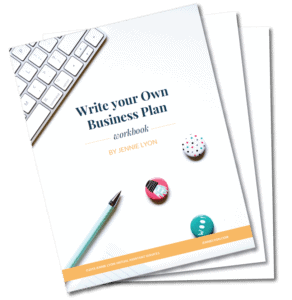7 Secret Steps to Successful Content + Free Workbook
If you want to become a successful content creator, you must write engaging content. Captivating readers and keeping them interested is key to continued and repeat traffic. Maybe this sounds overwhelming, or you hit writer’s block consistently, luckily writing content is easier than you think. It’s like riding a bike. Once you’ve got a system, you’ll never fret over it again.
Boosting productivity is an important goal for many e-commerce businesses and online entrepreneurs. Many of us know that by keeping it simple and focusing all our efforts on one thing at a time, we will streamline our outputs and achieve significant results. I learned early on, one way to make writing content more effortless and more consistent is to “batch” produce them. I am sure you’ve heard this term before, especially if you’ve been in business for any amount of time.
But what does batching content look like?
When you sit and focus on one thing, it is simply more efficient. With your attention focused, naturally, you will achieve your best results quicker. Batching allows you to become ultra-focused on the messages that will resonate with your audience, focus on quality content production, and help you stay in full entrepreneurial flow. So when it comes to batching content – the time and accelerator benefits become apparent.
Pro-Tip: In-between batches, go back and edit older posts to ensure they remain relevant and optimized for SEO.
Content creation is like playing football with your brain. The first step is to visualize what you want to happen, then make it real by writing it down. If you have several pieces of content in mind, it might help to get them all down on paper. Once this is done, you can then review the list and see if there are any patterns or relationships between the content that will give you an idea of how to release them.
Let’s look at five steps to help you get started batching, making your content creation a breeze! You might want to pause here and take notes, it gets into the nitty gritty.
Step 1. Brainstorm Lots of Content Ideas
Have you ever had the experience of looking at your screen wondering what you’re going to create? Not cool, and definitely a buzzkill on batching content. So, it’s important to schedule a “creative brain dump” day. Brainstorm topics, questions, images, interactive ideas, influencers and other ideas that can educate and add value to the lives of your target audience.
Write down every idea that comes to you. At this point there’s no need to evaluate them all. Just write them down in about 15-minutes and then move on to step 2 below. If the ideas are not flowing, it’s a good idea to get away from the screen for a bit. Take a walk, maybe do a light chore around the house or meditate. Anything to boost some energy and inspiration.
Now, to go a little deeper, do something else, like create a mindmap, use specific prompts, or whatever else works for you. Remember, scribble down ideas as they come to you without judgment. There’s no need to worry about if it’s any good or if you will even use it. A “so-so” idea can sometimes lead to a “brilliant” one down the road.
Step 2: Conduct Keyword Research
The point of keywords is to help people find your website and content. You want to make sure that they can find the content you are writing, right? Of course, you do. :) That’s why you want your content to appear on the first page of results. The more traffic you get, the more chance there is for someone interested in your topic to read it and become customers if you are offering services or products. To make your website more visible to the search engines, have a search engine optimization (SEO) strategy.
I bet you are thinking, then how do I know what to write about? It’s more simple than you think. Begin with a detailed examination of the specific words that people are using when searching for information related to your product or service. Once you know what keywords they are using, you can create content that includes (but is not limited to) these keywords. Remember, you want to write about topics and keywords that people are actively searching for.
Pro-Tip: Optimize your posts with long-tail keywords to help drive more traffic to your site. There are plenty of tools to assist with this like, Yoast.
Step 3: Create Your Outlines
The next step is to set aside a part of a day to create simple outlines for your topics. Some people aren’t too keen on creating outlines, but it’s good to have something to help you stay on track with your writing. They’re also great if you ever outsource your content writing, as you can stay in control of the content’s structure and basic flow while getting someone else to do the hard yards of writing it! Also, this will help you focus on the major points you want to make.
After a few sentences on establishing your rough structure, go on to the next section and flesh it out in more detail. Think of 3-5 main points you want to convey per post, and then make these the H2 headers. Creating several content structures in advance really helps make you feel like you’re on top of your writing process and renders writing each piece of content far less arduous. In addition, having a structure keeps you conscious that there’s an endpoint in mind.
Note: Here is a blog breakdown template you can use to make this system even more streamlined.

Step 4: Write the Content
Yes, eventually, you have to write these well-planned out pieces of content. But if you already have the long-tail keywords you are including, an attention-grabbing title, and an outline, then next, you are just filling in the details. Sit down and focus on the intro, or if you’re stuck on coming up with a snappy opening line, move on to another portion of the content. Alternatively, if you’re feeling like the words are flowing and you’re having one of those magical ‘good’ writing days, don’t hold off drafting other pieces of content just because you’ve finished one. Seize the mood and strike while the writing iron is hot! If you prepare several pieces of content in one sitting, you can set them aside for future publishing dates.
Step 5: Editing Content
Out of all the components of content creation, editing probably benefits the most from batching. So many people publish a piece of content without taking the time to proofread it. A good proofreader will catch your errors, no matter how fast you type. After you’ve reviewed your copy several times, I suggest giving it some time to rest before you make changes. Then make those changes, and proofread the copy again. This process will help you avoid getting attached to your first draft and open up your thinking to the possibility of improving the quality of your writing.
A good idea when writing copy is to do several ‘reads’ of your copy in the editing stage. Look for different things each time.
- What would you like to see?
- What would strengthen your piece?
- How could you make it more clear?
These can include anything you can think of that would make your offer more valuable to your audience. You can also use Grammarly to automatically correct problems in your writing, highlight and give suggestions to improve your writing, issues, or for a more refined edit. You can use it to polish quickly.
Step 6: Add The Bells and Whistles
By “bells and whistles,” I mean things like the image used for the header, the descriptive words and tags used in the copy, the style of the layout, CTAs, including social sharing buttons, and so on. Online profits are so much higher than offline profits because when making sales, the more “bells and whistles” you can add to your promotion, the higher your conversions.
Here’s an example of how to break it up into four manageable steps.
- Graphics. Find two or three websites you like using to create graphics and use them consistently. Many of my clients love Canva. It’s free, and as well as creating graphics, you can maintain a bank of custom images, social graphics, and much more. This will make your content more appealing to your readers, giving them a more cohesive and pleasant reading experience.
- Optimize your site for search engines. After you upload the content to your website, go back and fill out all the title tags, alt tags, etc. (make sure they are unique), set your featured image and meta description. Last, submit the post via Google Webmaster Tools by clicking on the “Search Crawl” button.
- Remember to use a strong CTA. Call to Actions gives the reader the next step YOU want them to take. For example, offer them a freebie that they can opt-in to, which applies to what they are reading. This way, they become part of your ecosystem, and you can continue to nurture the relationship.
- Check your links. Make sure they’re working and that they’re linked to other pages on your site by back-linking. And make sure every link you insert into your post works and is tracking.
Step 7: Create Your Content River
Now that you have your content mapped out, written, and pre-scheduled for the upcoming month or months next, you’ll want to create your social posts for your content. Consistency is an essential element of any good content marketing strategy. Your blog/podcast/YouTube video/email and social campaigns should all be in alignment. Why keep recreating the wheel when you can easily create a social content river off just one piece of content?
When you are finished, you should have:
- Tweets – Quotes from each piece of content
- Facebook Posts – Using snippets of the copy within your content
- Podcast Outline – Use your blog to record your podcast and create show notes
- YouTube Video – Record your podcast and viola you have a video
- Instagram Stories/Posts – Highlighting a quote or tangible take-away with a CTA leading back to the blog
- Newsletter – Email your list to remind them that the content is live and continue to nurture them with other elements sprinkled in.
These should all add value by dropping a bit of knowledge and pointing back to your content on your website.
So What Did We Learn?
- Brainstorm Content Ideas – Brainstorm topics, questions, images, interactive ideas, influencers and other ideas that can educate and add value to the lives of your target audience.
- Conduct Keyword Research – Keywords help people find your website and content.
- Create Your Outlines – Some people aren’t too keen on creating outlines, but it’s good to have something to help you stay on track with your writing.
- Write the Blog Posts – Sit down and focus on the intro, or if you’re stuck on coming up with a snappy opening line, move on to another portion of the content.
- Proofreading & Editing – After you’ve reviewed your copy several times, I suggest giving it some time to rest before you make changes. Then make those changes, and proofread the copy again.
- Add the Bells and Whistles – By “bells and whistles,” I mean things like the image used for the header, the descriptive words and tags used in the copy, the style of the layout, CTAs, including social sharing buttons, and so on.
- Create a Content River – Your blog/podcast/YouTube video/email and social campaigns should all be in alignment. Why keep recreating the wheel when you can easily create a social content river off just one piece of content.
In conclusion, when you batch creating your content, you are getting ahead and increasing your productivity. When you sit and focus on content creation in one go, you also end up producing well-thought-out, high-quality content, which will inevitably propel your business forward. Quality matters if you want to become an authority in your field, and quality takes time. Your time suddenly becomes accessible for you to focus on other, more strategic, business-building activities.
Schedule a consultation with me today, our team of content experts and copywriters are waiting to take your content to the next level.
Links for this episode:
Rate, Review, & Subscribe on Apple Podcasts
If you like what you hear on the podcast, please consider rating and reviewing my show! Woo Hoo! Click here, scroll to the bottom, tap to rate with five stars, and select “Write a Review.” I would love to hear what episodes you enjoy the most!
If you haven’t done so already, please subscribe to the podcast. I’ll be adding new content weekly, if you’re not subscribed, there’s a good chance you’ll miss out. Subscribe now!
























